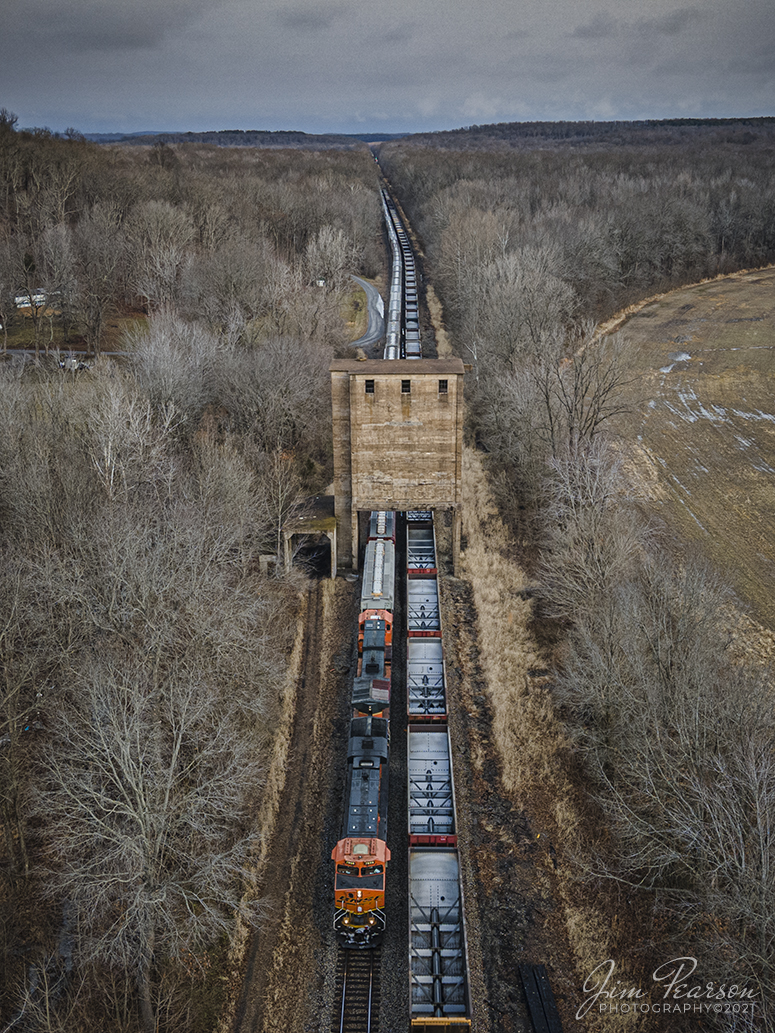On January 2nd, 2020 a empty BNSF grain train sits in the siding at Reevesville, Illinois as a empty CN coal train heads north, on CNs Bluford Subdivision, under the old Illinois Central Steam Train coaling tower.
According to Wikipedia: A coaling tower, coal stage or coaling station was a facility used to load coal as fuel into railway steam locomotives. Coaling towers were often sited at motive power depots or locomotive maintenance shops.
Coaling towers were constructed of wood, steel-reinforced concrete, or steel. In almost all cases coaling stations used a gravity fed method, with one or more large storage bunkers for the coal elevated on columns above the railway tracks, from which the coal could be released to slide down a chute into the waiting locomotives coal storage area. The method of lifting the bulk coal into the storage bin varied. The coal usually was dropped from a hopper car into a pit below tracks adjacent to the tower. From the pit a conveyor-type system used a chain of motor-driven buckets to raise the coal to the top of the tower where it would be dumped into the storage bin; a skip-hoist system lifted a single large bin for the same purpose. Some facilities lifted entire railway coal trucks or wagons. Sanding pipes were often mounted on coaling towers to allow simultaneous replenishment of a locomotives sand box.
As railroads transitioned from the use of steam locomotives to the use of diesel locomotives in the 1950s the need for coaling towers ended. Many reinforced concrete towers remain in place if they do not interfere with operations due to the high cost of demolition incurred with these massive structures.
Tech Info: DJI Mavic Air 2 Drone, RAW, 4.5mm (24mm equivalent lens) f/2.8, 1/120, ISO 400.

